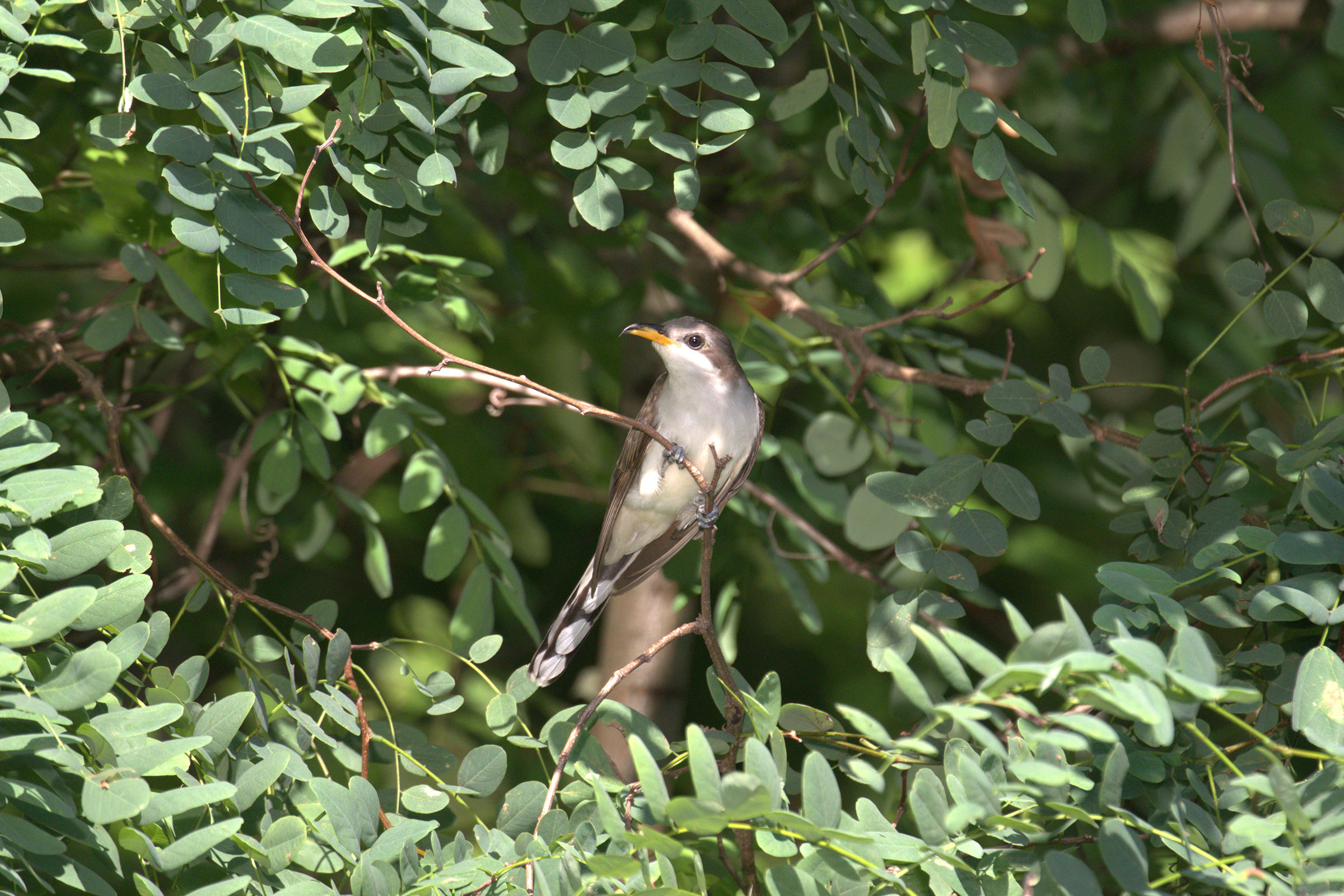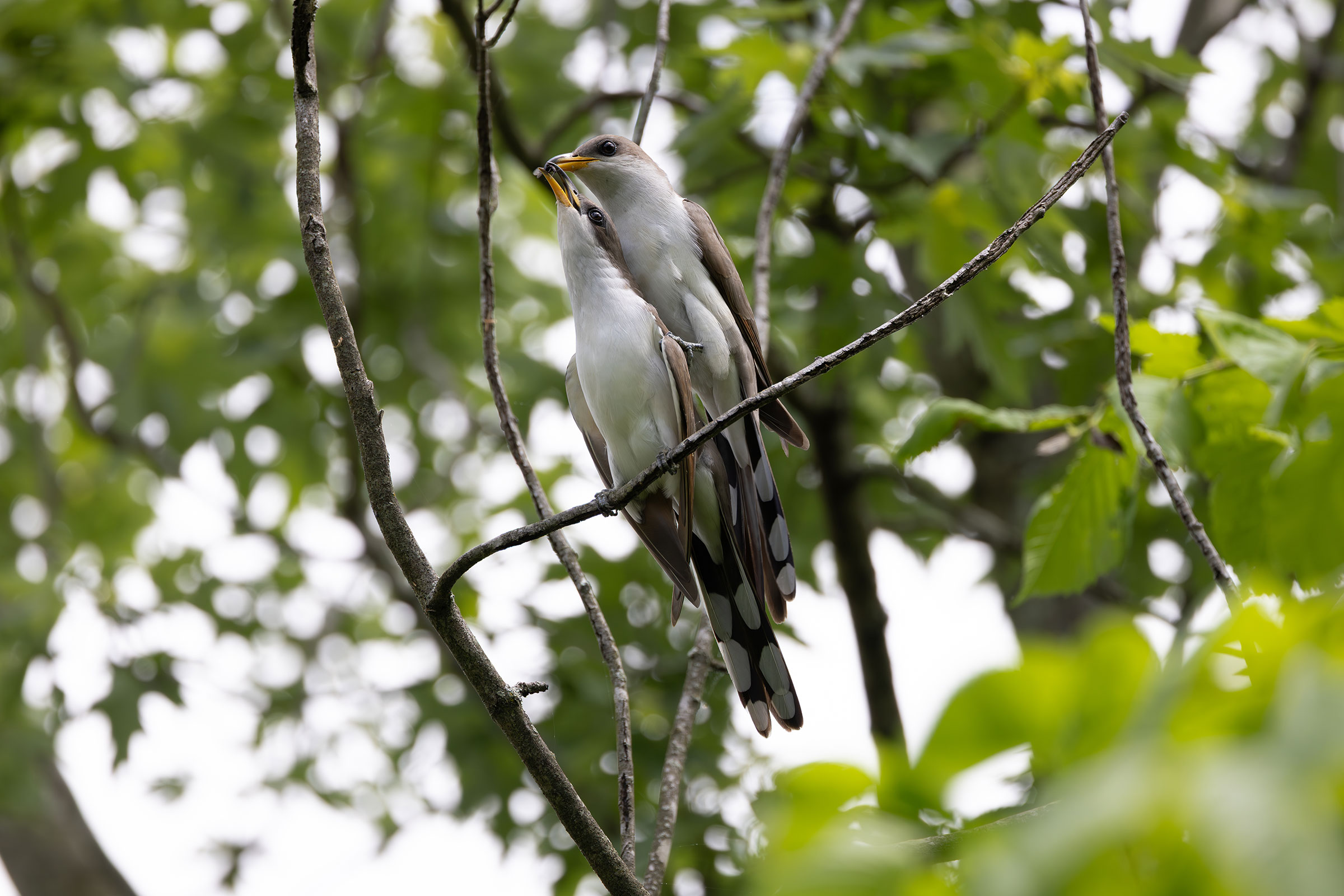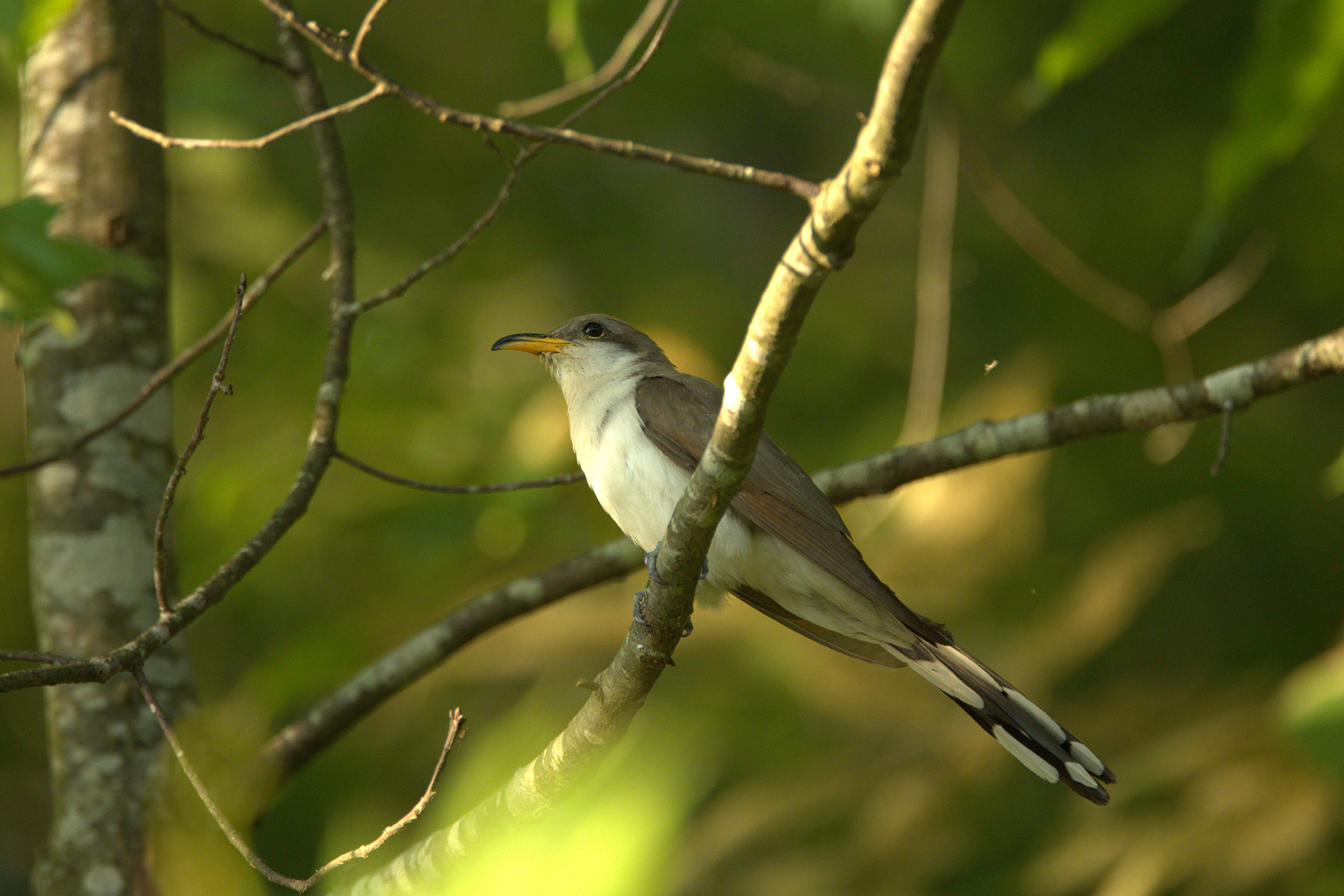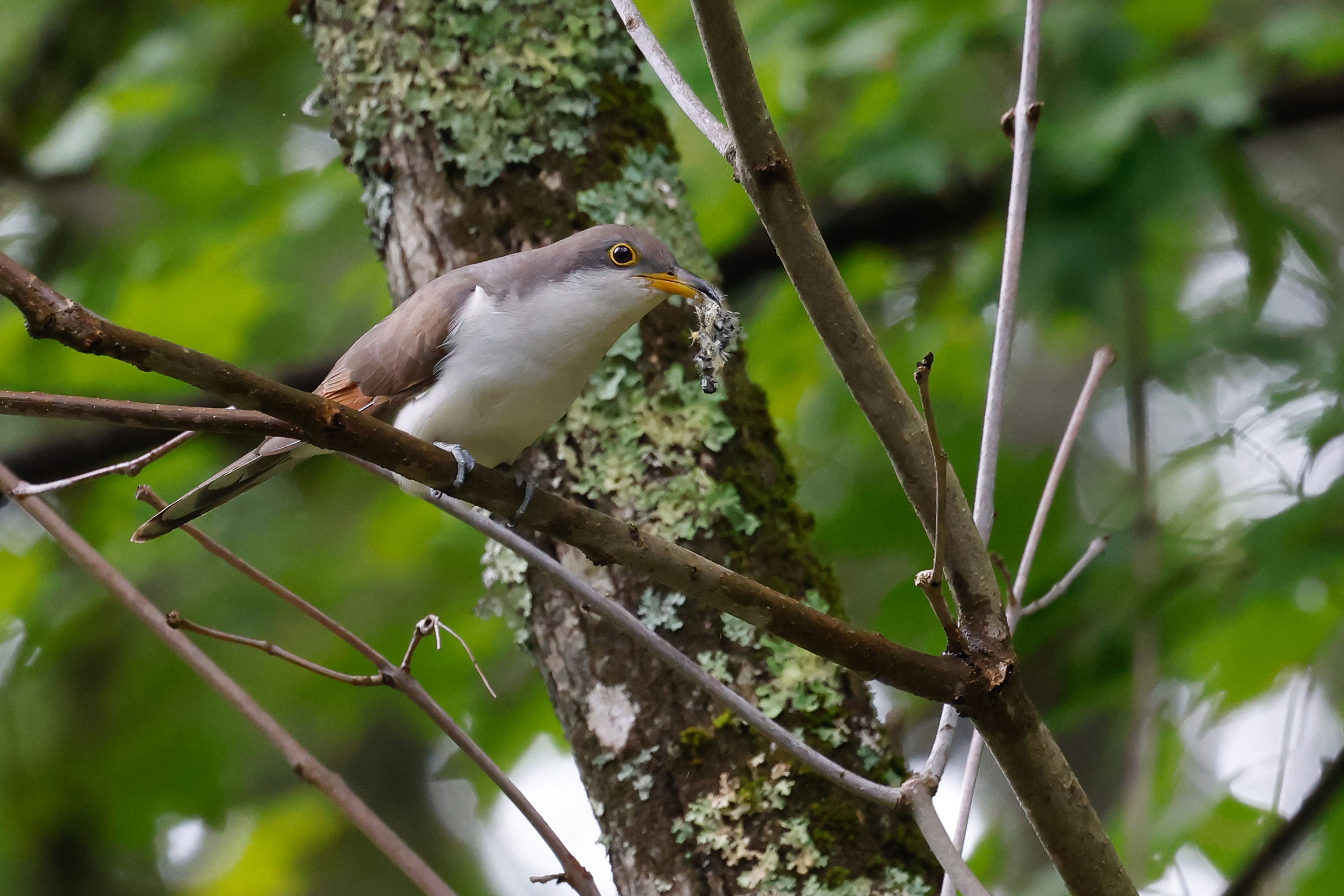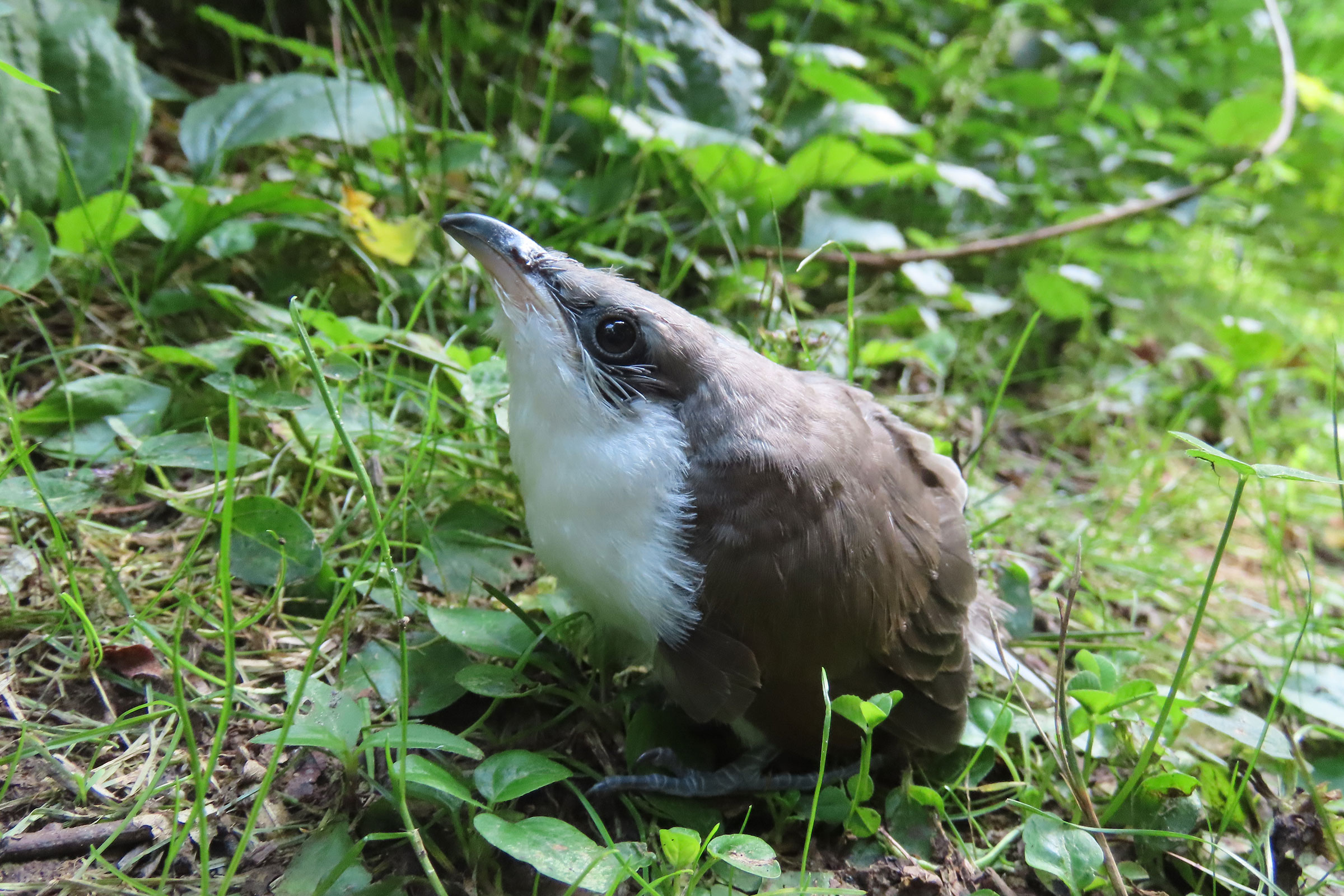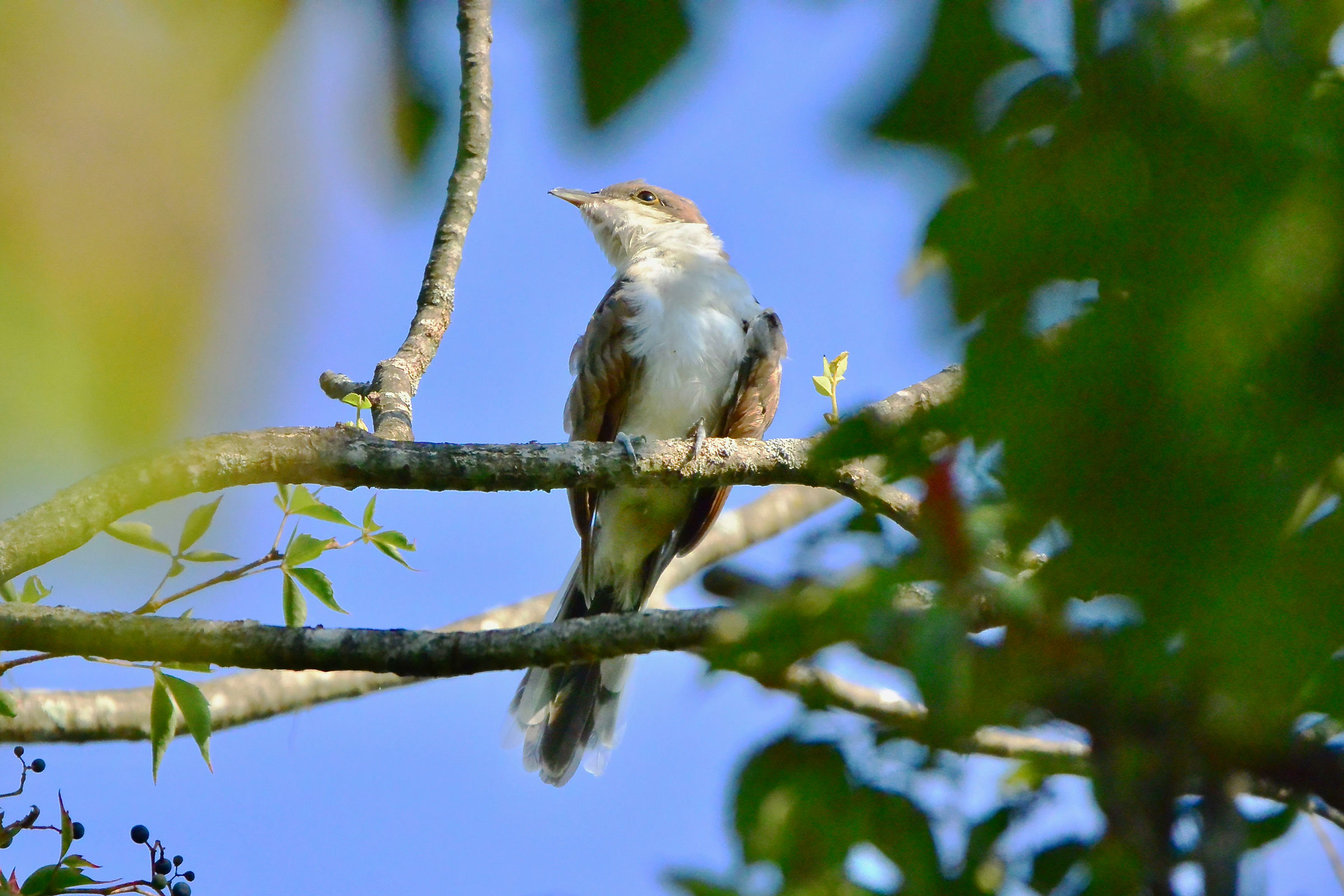Introduction
The Yellow-billed Cuckoo moves cryptically through the overstory but makes its presence known through summer with an unmistakable ka-ka-ka-ka-kow, kow, kowlp, kowlp, at times the only avian reprieve from the constant ramblings of vireos. The number of Yellow-billed Cuckoos breeding in an area varies substantially from year to year, likely based on the amount of food that is available (Hughes 2020). More specifically, Yellow-billed Cuckoos specialize in eating a range of insects, some of which have distinct population cycles, including hairy caterpillars (e.g., tent caterpillars [Malacosoma spp.]), cicadas (Magicicada spp.), and the larvae of spongy moths (Lymantria dispar dispar) (Hughes 2020).
Yellow-billed Cuckoos nest in thickets near streams, abandoned farmland, shrubland and grassland habitats, and forests (Wilson 2014; Hughes 2020). They are also known to be facultative brood parasites, laying their eggs in the nests of other bird species, such as American Robin (Turdus migratorius) and Gray Catbird (Dumetella carolinensis), but unlike their obligately parasitic Old-World relatives, this behavior appears to be opportunistic in Yellow-billed Cuckoos (Hughes 1997).
Breeding Distribution
Yellow-billed Cuckoos are found throughout all regions of Virginia, and they occur at a uniformly high rate across the state, with the exception of highly urbanized areas, such as Norfolk, Richmond, and Fairfax County, where they are less likely to occur (Figure 1). Although Yellow-billed Cuckoos are found in forested areas, they are not associated with larger tracts of contiguous forest, suggesting that diverse habitat types are important to this species.
This species’ distribution during the First Atlas and the change between Atlas periods could not be modeled due model limitations (see Interpreting Species Accounts). For more information on its distribution during the First Atlas, please see the Breeding Evidence section.

Figure 1: Yellow-billed Cuckoo breeding distribution based on probability of occurrence (Second Atlas, 2016–2020). This map indicates the probability that this species will occur in an Atlas block (an approximately 10 mi2 [26 km2] survey unit) based on environmental (including habitat) factors and after adjusting for the probability of detection (variation in survey effort among blocks).
Breeding Evidence
Yellow-billed Cuckoos were confirmed breeders in 189 blocks and 75 counties and probable breeders in an additional 20 counties (Figure 2). The large number of observations throughout the state that did not lead to breeding confirmations is a testament to the Yellow-billed Cuckoo’s secretive nature and tendency to nest in dense vegetation, where observing behaviors and finding their spartan nests are difficult. Breeding observations were recorded across the state during the First Atlas as well (Figure 3).
The earliest confirmed breeding behavior was recorded on May 5 when adults were observed carrying nesting material (Figure 4). The latest breeding behavior recorded was in mid-September when adults were seen feeding young. In addition to adults carrying nesting material, breeding was primarily confirmed through observations of adults carrying food (May 21 – August 31) and recently fledged young (June 14 – September 8).
For more general information on the breeding habits of this species, please refer to All About Birds.
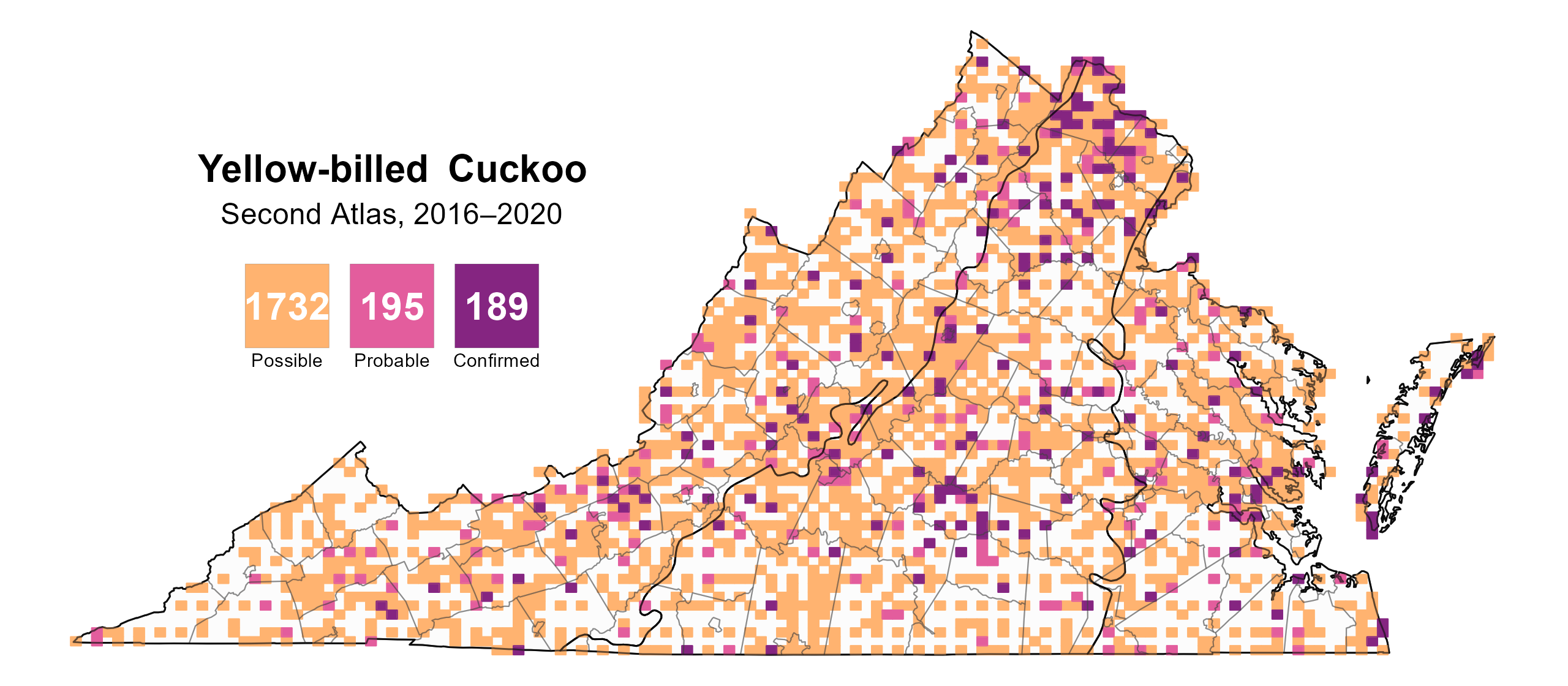
Figure 2: Yellow-billed Cuckoo breeding observations from the Second Atlas (2016–2020). The colored boxes illustrate Atlas blocks (approximately 10 mi2 [26 km2] survey units) where the species was detected. The colors show the highest breeding category recorded in a block. The numbers within the colors in the legend correspond to the number of blocks with that breeding evidence category.

Figure 3: Yellow-billed Cuckoo breeding observations from the First Atlas (1985–1989). The colored boxes illustrate Atlas blocks (approximately 10 mi2 [26 km2] survey units) where the species was detected. The colors show the highest breeding category recorded in a block. The numbers within the colors in the legend correspond to the number of blocks with that breeding evidence category.
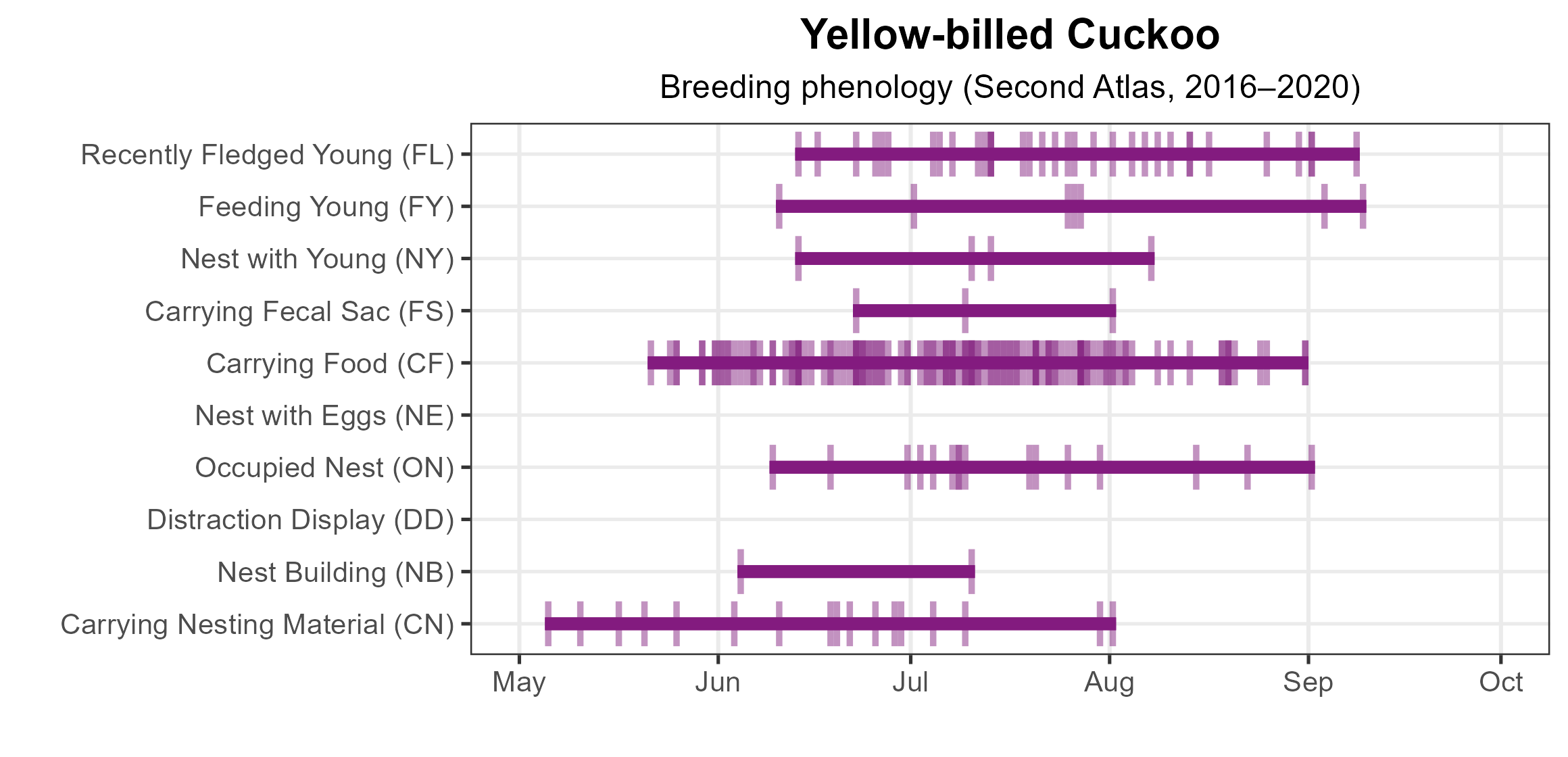
Figure 4: Yellow-billed Cuckoo phenology: confirmed breeding codes. This graph shows a timeline of confirmed breeding behaviors. Tick marks represent individual observations of the behavior.
Population Status
Yellow-billed Cuckoo relative abundance was estimated to be geographically variable, with the highest levels estimated in the Piedmont region and most of the Coastal Plain region, except the Eastern Shore and southeastern portion. Its abundance was lower in the Mountains and Valleys region and lowest near urban areas throughout the state.
The total estimated Yellow-billed Cuckoo population in the state is 665,000 individuals (with a range between 346,000 and 1,293,000). Based on the North American Breeding Bird Survey (BBS), the Yellow-billed Cuckoo population declined by a nonsignificant 0.49% annually from 1966–2022 in Virginia, and between Atlases, its population experienced a nonsignificant increase of 0.45% per year from 1987–2018 (Hostetler et al. 2023; Figure 6).
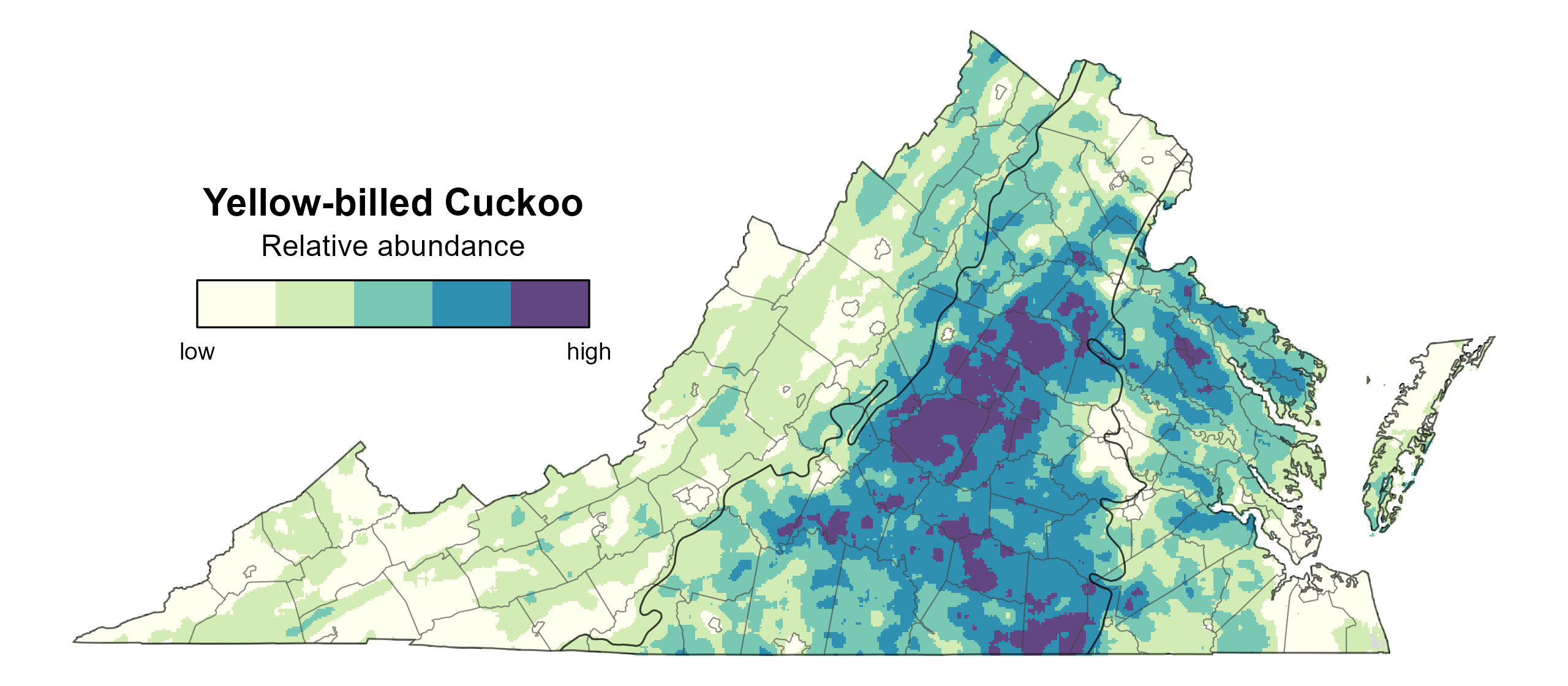
Figure 5: Yellow-billed Cuckoo relative abundance (Second Atlas, 2016–2020). This map indicates the predicted abundance of this species at a 0.4 mi2 (1 km2) scale based on environmental (including habitat) factors. Abundance values are presented on a relative scale of low to high.
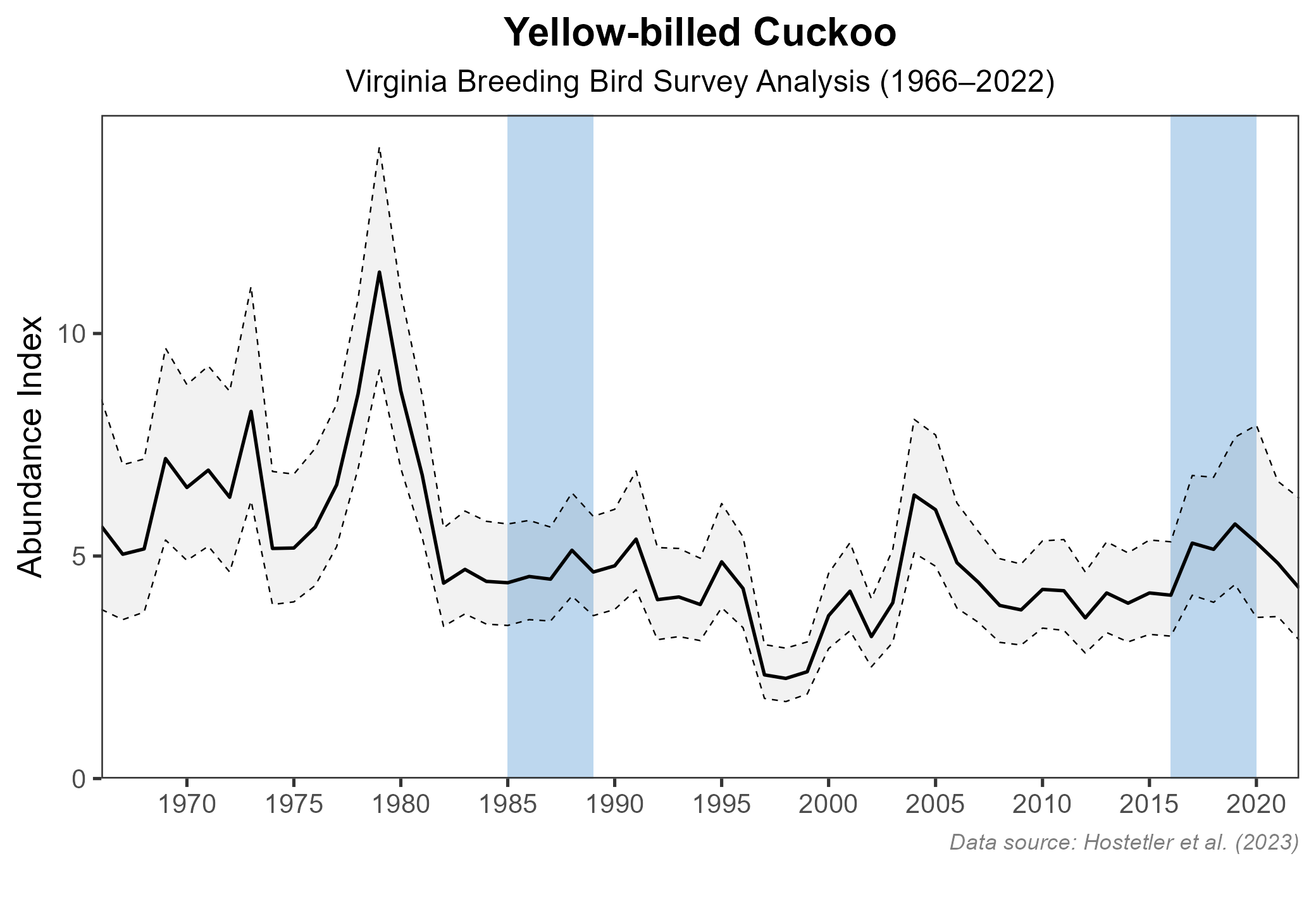
Figure 6: Yellow-billed Cuckoo population trend for Virginia as estimated by the North American Breeding Bird Survey. The vertical axis shows species abundance; the horizontal axis shows the year. The solid line indicates the estimated population trend; there is a 97.5% probability that the true population trend falls between the dashed lines. The shaded bars indicate the First and Second Atlas periods.
Conservation
Yellow-billed Cuckoo populations have remained stable in Virginia and throughout the eastern portion of their breeding range. In these areas, the species is not of conservation concern (Hughes 2020).
Interactive Map
The interactive map contains up to six Atlas layers (probability of occurrence for the First and Second Atlases, change in probability of occurrence between Atlases, breeding evidence for the First and Second Atlases, and abundance for the Second Atlas) that can be viewed one at a time. To view an Atlas map layer, mouse over the layer box in the upper left. County lines and physiographic regional boundaries (Mountains and Valleys, Piedmont, and Coastal Plain) can be turned on and off by checking or unchecking the box below the layer box. Within the map window, users can hover on a block to see its value for each layer and pan and zoom to see roads, towns, and other features of interest that are visible beneath a selected layer.
View Interactive Map in Full Screen
References
Hostetler, J. A., J. R. Sauer, J. E. Hines, D. Ziolkowski, and M. Lutmerding (2023). The North American breeding bird survey, analysis results 1966–2022. U.S. Geological Survey, Laurel, MD, USA. https://doi.org/10.5066/P9SC7T11.
Hughes, J.M. (1997). Taxonomic significance of host-egg mimicry by facultative brood parasites of the avian genus Coccyzus (Cuculidae). Canadian Journal of Zoology 75:1380–1386.
Hughes, J. M. (2020). Yellow-billed Cuckoo (Coccyzus americanus), version 1.0. In Birds of the World (P. G. Rodewald, Editor). Cornell Lab of Ornithology, Ithaca, NY, USA. https://doi.org/10.2173/bow.yebcuc.01.
Wilson, M. D. (2014). Avian survey of Fort Lee, Virginia 2014. Center for Conservation Biology Technical Reports CCBTR-14-14. College of William and Mary, Williamsburg, VA, USA.

